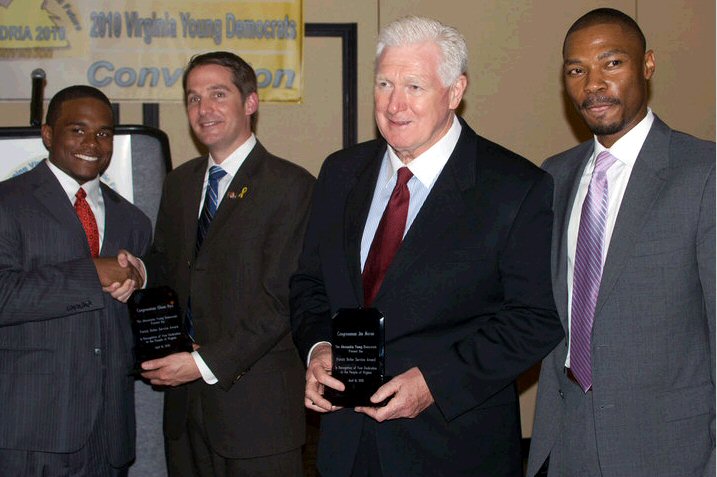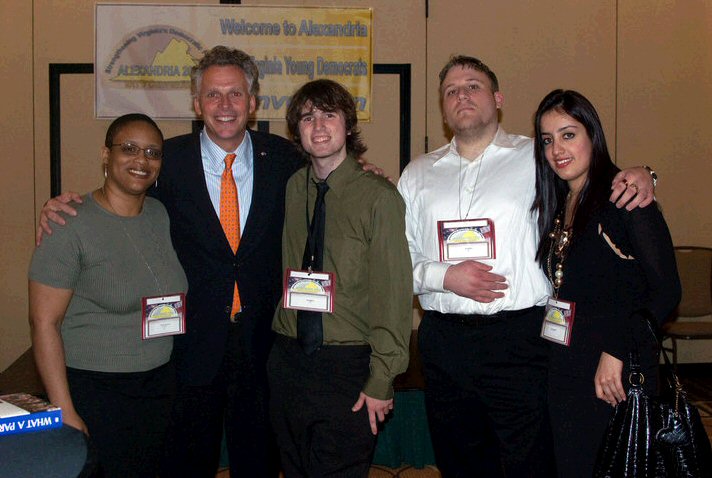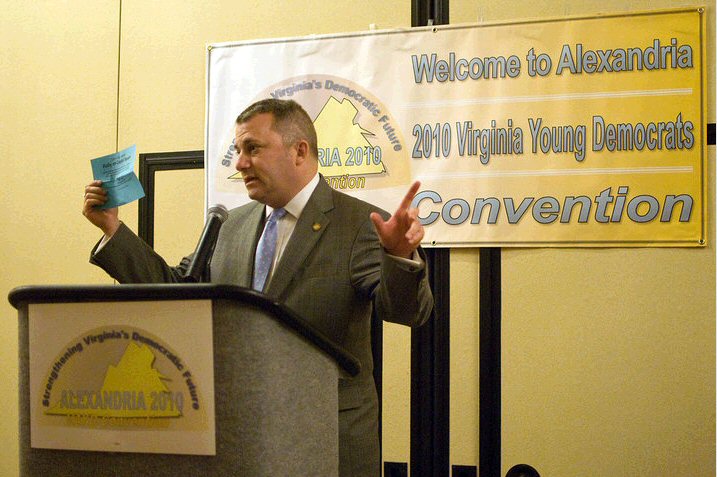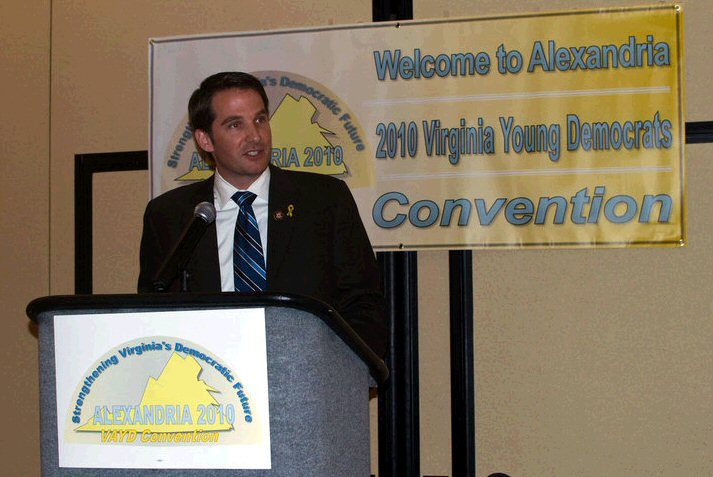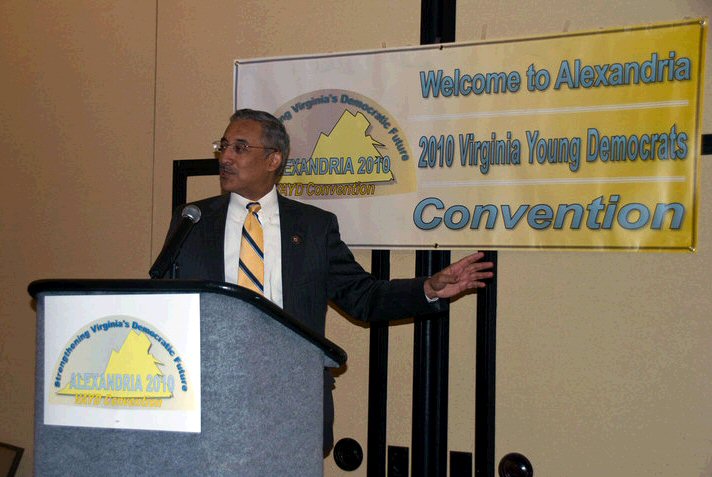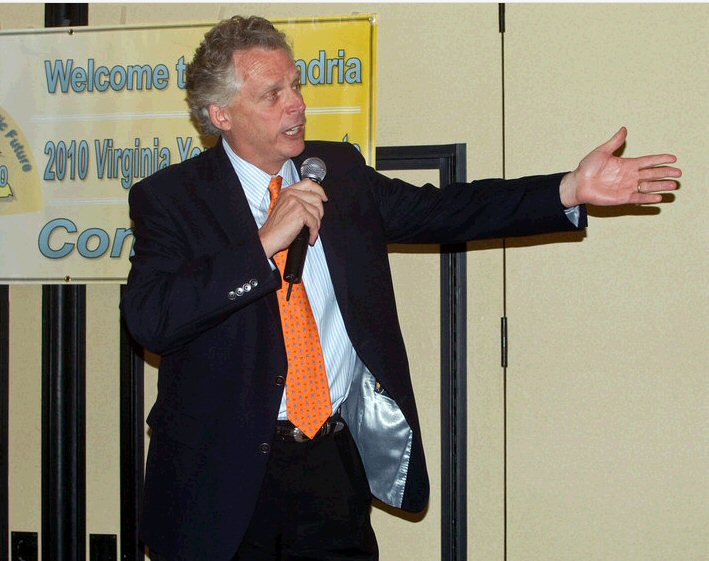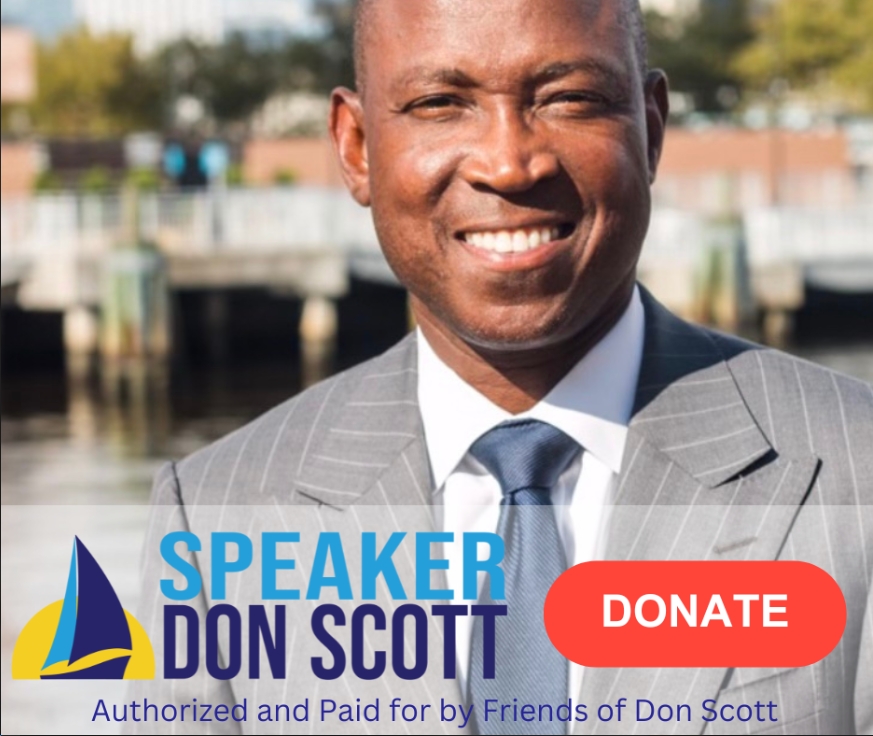is perhaps the most important single article to date on what has developed from the Princeton Senior Thesis of Wendy Kopp. Authored by Barbara Miner, it appears in the Spring edition of Rethinking Schools, which if you care about the future of public education you should support (while the material is available online, you can consider contributing if you choose not to subscribe). here is the link directly to the article
A PDF version of the article was circulated among similarly thinkers on education a few weeks before the Spring issue was mailed. I have not written about it until now because I wanted to be certain that it was fully accessible to all I might be able to interest in it, and it was not on the web site (which was being migrated) until earlier this week. It was only on Saturday afternoon that I had sufficient time to do the article justice.
I will be happy if you have already decided to go read the entire article (again, here’s the link), but in case you have not, let me offer some thoughts that might persuade you.
First, before I go further, let me note that I have permission from Rethinking Schools to quote beyond the normal fair use limitations for the purpose of my reviewing the article, which begins with an italicized statement that alerts you to the focus, Most Teach for America recruits are idealistic and dedicated. But who is behind the organization, and does its approach bolster or hinder urban education reform?
Miner begins describing her thoughts as she is driving towards St. Louis for part of her research on the article, which is when we we encounter her writing
Do people honestly think that sending Ivy League graduates into the St. Louis schools for two years will somehow unlock the academic achievement that is seen as a cornerstone of rebuilding our cities? Can the antidote to educational inequity, urban disinvestment, and neighborhood decay really be so simple?
Let me stop and digress a moment. Teach for America goes beyond the Ivies to other prestigious schools, including my own Alma Mater, Haverford College, which will on occasion brag to its alumni about the participation of its graduates. I have on occasion talked seniors out of applying, which has not endeared me to some on the campus. My argument as a professional educator is simple – unless the person going in is willing to be open about continuing beyond the required 2-year commitment, it is unfair to the students and the school, because it takes a while for any teacher to become effective, and too many of the students they will encounter already have experienced adults who simply pass through their lives.
I have been vocal in my criticism of Teach for America (TFA) over the years, to the point that once a VP of the organization asked for a meeting to persuade me they had addressed many of the things I had criticized, and they even gave me access to their internal web-based materials. While I appreciated the openness, what I saw then, and what I have seen since, has done little to change my skepticism about the entire approach. Reading Miner’s article strongly reinforced what I already felt. If that is going to bother you, you can stop reading now and return to Miner, to which I shall also return.
The purpose of Miner’s article, as she notes, is supposed to be about the organization and education reform, not about the abandonment of low income communities of color. Yet when she returns to her home base of Milwaukee after 2 weeks of interviews and research, she is troubled. As she writes,
I have come to distinguish between the generally hard-working, smart, and idealistic TFA classroom teachers, and a nation al organization that is as sophisticated, slippery, and media savvy as any group I have ever written about. TFA is perceived as a major player in the education wars over the future of public schools, and a key ally of those who disparage teacher unions and schools of education, and who are enamored of entrepreneurial reforms that bolster the privatization of a once-sacred public responsibility.
But what exactly is TFA’s role in these education wars? Who is directing the organization and to what ends? More importantly, what is TFA’s role in improving urban education?
For many of us who are committed to public education, the question in that brief paragraph immediately above this are key.
There is no doubt that on some levels TFA, which some critics have labeled as “Teach for Awhile” or “Teach for a Resume,” has achieved “success” (although it may not necessarily be on behalf of the students it ostensibly serves). As Miner notes, in 2009 it received over 35,000 applications, including an astonishing 115 of Ivy graduates, and as of the writing of the article it had 7,300 teachers in 35 locations, some of which have
significant teacher turnover and hire large numbers of uncertified teachers.
The article is too rich to fully cover in a posting like this, which is why I will again encourage you to read the entire thing. Let me note a couple of things that caught my attention. TFA now does more training and support of its candidates, including having relationships with a number of schools/colleges of education (which as Miner notes seems to be contrary to the original goal of taking bright graduates and putting them in with little training in the belief that they could still make a difference). What further caught my attention is that some of the training of their candidates is paid for my our tax dollars: members receive tuition towards a masters through Americorp, to the tune of a $4,725 annual educational award. Now, were those receiving that training all committed to remaining in the inner city schools in which they serve I might not object, but for many even this is still but a step on the way to something else, perhaps business school or law school. Of the three members TFA arranged for Miner to interview in St. Louis (out of the total of 183 in public and charter schools), only one was committed to staying beyond the requisite two years, and even she is thinking beyond the classroom: she will spend five years teaching while earning masters in education and educational administration, then go to law school, and then . . .? As this teacher, Melinda Harris, notes
“I can honestly say, what I have learned I could use in another profession: the networking, the time management and organizational skills.”
And of course the ever-present alumni network will help her with whatever goals beyond the classroom she decides to pursue.
One problem with TFA and how it selects its teachers is the mismatch between teachers and students.
In 2008 about 10 percent of corps members nationwide were African American, and about 7.5 percent were Latino; overall, almost 29 percent are people of color. Figures for the TFA staff are similar. TFA classrooms, meanwhile, are about 90 percent African American and Latino.
In theory, there is not necessarily a stumbling block between having white middle class teachers in a predominantly minority school – I and a majority of the teachers in my school are white, while we are a minority majority school. But there are differences. First, while we have students from a variety of economic circumstances, they are still predominantly middle class. Second, our teachers are committed to the school: an art teacher who passed away earlier this week had been there since the building opened in the 1970s. I arrived at the school in 1998, and in my department of 17 teachers there are 5 who were there when I arrived.
Further, 7,500 is a drop in the ocean of millions of teachers. Even if we look at the needs of inner-city and rural schools with high degrees of poverty, we needs hundreds of thousands of teachers. It is not clear to me, or to anyone who has seriously and dispassionately studied TFA, that it provides any kind of useful model for how we serve the millions of children in such schools. The article includes a separate box which has some remarks from Barnett Berry, who coincidentally is co-founder of the Teacher Leaders Network of which I am a member. Barnett acknowledges that a Teach for America Recruit might well be better than the uncertified substitute that a child in an inner city school might otherwise have, and of course we should encourage bright and enthusiastic young people to take on the task of such educational settings. Let me quote 3 paragraphs from that box, so that you get the full impact of Berry’s concerns:
“But,” Berry continues, “to suggest that TFA is the solution to the nation’s teaching quality gap is misguided at best.”
Berry likens the TFA recruits to sprinters-talented athletes, but insufficient if one wants to build a well-rounded track team. “TFA gets its recruits ready for a sprint, not a 10K or a marathon,” Berry notes. “They look like they are working harder than the veteran teachers. But the veteran teacher has experience and knows that if you want to make a career of teaching, a sprinting pace will burn you out.”
Because TFA recruits aren’t expected to stay, they have two other advantages: they cost less and they tend to do what they are told. “By and large, they don’t raise questions,” Berry notes.
they don’t raise questions – we already have a problem that the voices of teachers are often not part of the discussions about educational policy. Teacher Leaders Network is one attempt to try to change that, and one of my compatriots, Anthony Cody, organized the Letters to the President effort that led to a large Facebook group that is now leading to a conversation with Secretary of Education Duncan. But by and large those of us who are committed to remaining in the classroom have to struggle to get our voices heard. That may explain some of the hostility one experiences from professional educators towards Teach for America – we see those with little teaching experience, sometimes not all that effective, suddenly being turned to as the experts on how to “fix” education when the voices of those whose efforts will be needed for the success of any meaningful reform continue to be excluded.
Teach for America requires a 2-year commitment. The statistics on those completing the commitment are somewhat inflated by TFA – in 2007 only 87% of those who should have been completing the 2 years actually were, and as Miner notes, the completion rate was lower in earlier years. Further, TFA claims that a survey of its alumni (who are supposed to include only those who completed the 2 years) shows “more than two-thirds of Teach for America alumni are working or studying full-time in the field of education.” The accompanying graph shows 50% of these as teachers. But as Miner notes, only 57% of those defined as alumni responded to the survey, and we have no figures on the 43% who did not. Further,
the field of education is loosely defined to include everything from working with a nonprofit advocacy group to getting a graduate education degree. . . . there is no sense of whether those who responded to the survey tended to be recent alumni, perhaps only a year past their initial commitments and more likely to be in graduate school or teaching for a third year, or older alumni who have moved on to other careers.
This is perhaps an appropriate time to remind those of you still reading of Miner’s title, which includes the words Looking Past the Spin. Teach for America has been very successful in gaining favorable coverage from Main Stream Media. I have read the results of the survey to which Miner refers in several major newspapers, both in news stories and opinion pieces, yet I had not before her article seen the details of that survey properly deconstructed and analyzed. The positive spin the organization receives is continued with the reflected glory by its alumni who go on to other challenges that are also often not examined as critically as they should be. Thus we have seen favorable news coverage of the Knowledge is Power Program (KIPP) schools, founded by TFA alums Mike Feinberg and Dave Levin, coverage that has now lead to a positive book by Washington Post writer Jay Mathews, who had previously written about Jaime Escalante (full disclosure – I have known Jay since 1998, and consider him a friend, even though I disagree with his evaluation of KIPP), and of course, former TFA’er and now Chancellor of DC Public Schools Michelle Rhee (whose ex-husband and father of her children, Kevin Huffman, is now Executive Vice President of Public Affairs for TFA and, oh by the way, just so happened to win the Washington Post’s Next Great Pundit contest.
What concerns many of us committed to public education is the outsized influence and voice TFA and its people have. Let me quote two brief paragraphs from Miner to attempt to illustrate the reasons for my concern.
First,
Twenty years ago, before TFA had placed a single teacher in a single school, there were glowing articles in the New York Times, Newsweek, and Time, and a segment on Good Morning America. The media love-fest with TFA has never stopped, extending to soft publications always eager for a feel-good story, such as Reader’s Digest and Good Housekeeping. When TFA founder Kopp calls Thomas Friedman at the New York Times, he not only answers her call, but also quotes her extensively (see Friedman’s April 22, 2009, column).
And then, this:
Some 27 TFA alumni are currently in office, nine more are running for office, and more than 700 are interested in “pursuing political leadership.” TFA has a goal of 100 elected officials in 2010.
Stop and consider that for a moment. A publicly stated goal of elected officials.
I know teachers who have pursued public office directly from their classrooms – both Tim Walz of MN and Larry Kissell of NC were elected to the US House of Representatives directly from their social studies classrooms. Former Rep. Wayne Gilchrest of MD was, like me, both a former Marine and a social studies teacher. We have had presidents who served as teachers – Lyndon Johnson began his work career teaching poor children (largely Hispanic) in Texas, an experience which certainly shaped his agenda in the Great Society while serving as our Chief Executive.
Still, I would hope that we would be encouraging gifted, bright, enthusiastic people who can teach to remain in schools. I think we should be reshaping the teaching profession so one does not have to leave the classroom to make an adequate living. That SOME may go on to administration, or school boards, or even elective or appointive office is fine, but I question if that should be the goal. I wonder how that actually contributes to making our schools better for the children who so desperately need our help.
It seems as if political power is important to those involved with TFA. This became evident during the putting together of the Obama administration. Linda Darling-Hammond of Stanford had been one of the principal advisors on education during the campaign, and had headed up the transition team on education. For many, she was a logical choice for Secretary of Education. She had served as an inner city school teacher, and in her years in academia had participated in many important initiatives about teaching and education. But she was the principal author of a study that had been critical of TFA, and she was vociferously opposed by the TFA network. For what it is worth, one does not have to be a TFA alumni to participate in politics, and living as I do just outside our national capital I take full advantage of proximity to develop relationships. I heard both personally and via the internet of the organized campaign against Darling-Hammond, the roots of which were solidly within TFA and its alumni.
Let me return to Miner’s article. I previously mentioned Kevin Huffman. Miner interviewed him. He made clear that the two-year commitment, about which I and so many are critical, is key to TFA’s theory of change. Let me quote two relevant paragraphs:
I struggled to remember media references to this “theory of change.” What was this theory? “That we will bring in great people who will have a tremendous impact on the kids they are teaching and who will go on for the rest of their careers to have an impact on root causes that cause the gap in educational outcomes in this country,” Huffman explained.
I noted that TFA’s theory of change sounded top-down and that it left out the voices and perspectives of the communities who were supposed to benefit. I could sense Huffman’s frustration. “I think that misapprehends our theory of change,” he said. This wasn’t just an educational policy initiative, he noted, because TFA hoped that alumni would enter other fields such as medicine and law and make equally important contributions. “We are decidedly nonpartisan and apolitical about what our alumni are pursuing or pushing,” he said. “We have a belief that our alumni have had an experience that will help them make better decisions.”
By now I hope I have convinced you of some of the riches of Barbara Miner’s piece. But there is much more. She examines the 501(c)4 that is used in what seems a strange fashion to advance the agenda of TFA. She also talks with people on the political and educational left who raise concerns about TFA, most notably Mike Rose and the late Howard Zinn (who is honored in the same issue as this article in Losing our Favorite Teacher). Zinn’s words are important:
“The idea of bringing in ‘great’ people, ‘important’ people, is counter to the idea of a democratic education,” he wrote. “And all the insistence on not taking policy stands, not having an ‘ideology,’ is simply naïve. Not taking policy stands is itself an ideology, and an ideology which reinforces the status quo in education and in society.”
I am firm believer that one function of our schools should be democratic empowerment, especially of those we teach. It is one reason I have explored rethinking (now there’s an appropriate word, eh?) how we design, structure, and operate our schools. One might hope that those who teach in public schools would have similar aspirations for our students, and thus might model it themselves. Which is why a recent study from Stanford is quite illuminating. On the question of civic engagement, the study
found that TFA alumni actually had lower rates of civic involvement than those who were accepted by TFA but declined, and also had lower rates than those who dropped out before their two years were completed, according to a summary in the New York Times.
Miner also follows the money – the sources of funding for TFA. I will let you explore this section of the article on your own. She also explores a study of TFA teachers at which she was pointed by a TFA exec, and which was done by Mathematica. I suppose the exec cited the Mathematica piece because it offered some criticism of the study led by Darling-Hammond which caused such hostility towards the Stanford Prof from TFA circles. Let me offer just a snip from that sidebar:
I went to the Mathematica study and, quite frankly, wondered why TFA was promoting it. I imagined how the Onion might summarize the study: “Teach for America goes up against the worst teachers in the country-they’re both awful!”
Let me offer a couple of other snips to give you a sense of the depth of this article.
In a cover story last fall, Business Week put TFA at the number seven spot in its top 10 listing of “The Best Places to Launch a Career,” just after Goldman Sachs and just before Target.
TFA, meanwhile, actively promotes the value of joining its teaching corps, especially for those thinking of graduate school or immediately transitioning to a corporate job. Its website boasts of TFA’s partnership with over 150 graduate schools offering TFA alumni benefits such as two-year deferrals, fellowships, course credits, and waived application fees. The most popular schools for TFA alumni are Harvard, Stanford, Yale, Northwestern, and the University of California-Berkeley-with Harvard the overall top choice.
Its employer partners, which actively recruit TFA alumni, are equally prestigious and include Goldman Sachs, JP Morgan, KPMG, Credit Suisse, McKinsey and Company, and Google. TFA partners in its School Leadership Initiative for alumni, meanwhile, include the for-profit Edison Schools. (TFA founder Kopp has nothing but praise for Edison in her memoir. She is also open to the idea of vouchers.)
So, TFA becomes a ticket-punching stop on the way to a more “important” and lucrative career outside of teaching, with the added benefit that the alum can feel as if s/he has done a good deed and is now also an expert on education?
TFA is big business: “TFA had revenues of $159 million in fiscal year 2008 and expenses of $124.5 million.” Remember, this is for a total of about 7,500 actually in classrooms. Do the math . . .
TFA is lucrative for its executives:
CEO and founder Wendy Kopp made $265,585, with an additional $17,027 in benefits and deferred compensation. She also made an additional $71,021 in compensation and benefits through the TFA-related organization Teach for All. Seven other TFA staffers are listed as making more than $200,000 in pay and benefits, with another four approaching that amount.
Let’s return to Kopp’s praise for Edison, Chris Whittle’s failed attempt at a for profit chain of schools in the public sector, which lost contracts in multiple cities for failure to perform, whose stock was about to be delisted by NASDAQ when it was propped up when then Governor Jeb Bush of Florida used money from the pension fund of Florida teachers to buy shares and thus prop up the stock price. Kopp just happens to be married to Richard Barth, a former Edison VP (and TFA staffer) who just so happens to be president and CEO of the Kipp foundation. As Miner notes, the joint salary of this new power couple in education is over 600,000/year.
Miner also examines Wendy Kopp’s memoir, of which she notes that the only time a school child is mentioned by name is briefly, about 20 pages from the end. I want to react to this.
I need permission to use the names or identifying information of my current students, or students who were minors at the time they were in my classroom. Yet if I think about the times I write about education here or elsewhere, it is not at all unusual for me to mention one or more specific students in a piece of 2,500 words or less. After all, as a teacher I believe my focus is the individual student before me: that is where I must start and that should be the standard by which my effectiveness should be measured. It bothers me that Kopp can opine as an expert on education with little reference to individual students. Perhaps that is because the focus of her organization seems to be on the teachers/future alumni more than it is on the children they should be serving. I admit it, that bothers me.
Barbara Miner is a very effective writer. And an effective writer best skewers a target using that target’s own words. I believe the conclusion to Miner’s piece properly frames, using Wendy Kopp’s own words, what is wrong with the TFA model, which requires only a 2-year commitment to teaching.
So let me conclude using Miner’s words, and in advance wish you my final salutation:
Peace.
But what if one accepts TFA’s assumptions-that its purpose is purely to address educational inequity by recruiting the best and the brightest, training them briefly, and having them teach for two years in a low-income school? And that its model trumps the value of recruiting accredited teachers who view teaching as a career?
Given that the revolving door of unqualified teachers is a key factor in the poor performance of many low-income schools, what are the repercussions of those assumptions? Is TFA aggravating a problem that it claims to be solving?
It is Kopp herself who perhaps best answers that question. Speaking in a 2007 commencement speech at Mt. Holyoke College, Kopp said:
What I have come to appreciate is that things that matter take time. We live in an era when it is rare to meet people in their 20s and 30s who have stayed with something for more than a few years. And certainly, in some cases the right thing is to experiment and move on. But in many cases, the right thing is to stay with something, internalize tough lessons, and push yourself to new levels of knowledge and responsibility. Deep and widespread change comes from sticking with things.


 Much has been made recently of the many angers of the Tea Partyers, to wit: the swollen big federal government, taxes, the national deficit (both budget and trade), Second Amendment rights, states’ rights, restoring the Real Constitution, President Obama’s socialist/fascist agenda with special fury reserved for the Health Care reform bill, and so on. Now there is another anger-trigger: anyone who implies that the Tea Party members and its many angers are in any way racist, or even slightly prejudiced. No, no, you elitists, the Tea Party’s anger is pure! “Give us our country back!” ” Restore the Constitution our Forefathers’ created!”
Much has been made recently of the many angers of the Tea Partyers, to wit: the swollen big federal government, taxes, the national deficit (both budget and trade), Second Amendment rights, states’ rights, restoring the Real Constitution, President Obama’s socialist/fascist agenda with special fury reserved for the Health Care reform bill, and so on. Now there is another anger-trigger: anyone who implies that the Tea Party members and its many angers are in any way racist, or even slightly prejudiced. No, no, you elitists, the Tea Party’s anger is pure! “Give us our country back!” ” Restore the Constitution our Forefathers’ created!”
